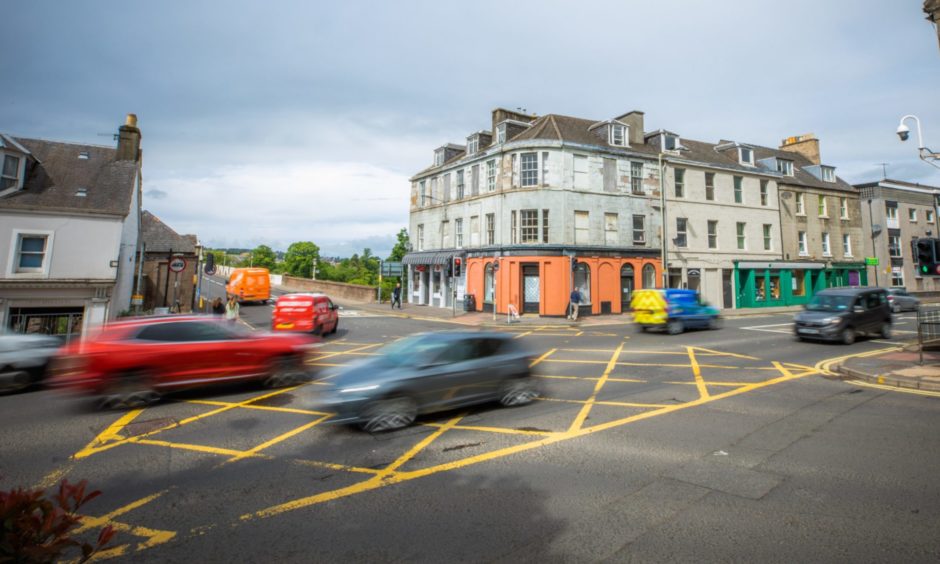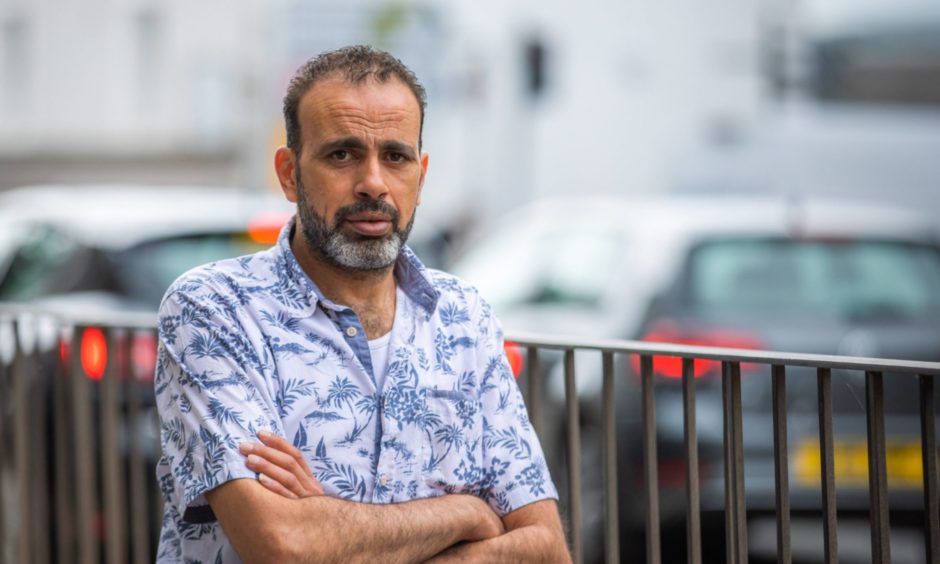The Cross Tay Link Road is being built in the belief it will ease traffic congestion in Perth – but do people in the Fair City agree?
In the city’s Bridgend area, cars and lorries on the main road meet traffic coming down Lochie Brae and over the 250-year-old Smeaton’s Bridge.
Vehicles have to negotiate a tricky junction – described as an accident blackspot by locals.
Perth and Kinross Council say the Cross Tay Link Road (CTLR) is the only option for improving traffic flow at the junction.
The £118 million road building project will include a new bridge over the Tay connecting to the north of Scone.
Council transportation bosses are confident the new link will ease congestion in Bridgend and the town centre in general.
It is hoped it will also improve air quality in the city.
A number of people living and working in the Bridgend area are in favour of it going ahead.
Others are not convinced.
What impact will the Cross Tay Link Road have on Bridgend congestion?
Local barber and business owner Fayez Osman, 43, says Bridgend is not the best location for his shop.
The main road may be busy but Fayez says parking options are limited. Busy does not mean more business.
But with the regards to the CTLR he is looking at the bigger picture.
Despite the prospect of the new route taking people away from the area, he says it will benefit the city as a whole.
“When we have the new road it will be good news for the city,” he said.
“Anything that makes it easier for people.
“It’s definitely going to take traffic away from here, but we don’t know if this will affect business or not.”
He added: “A lot of people can’t park, and as a business we are struggling with the parking.”
Nightmare junction
Fayez is among those concerned about the frequency of road accidents at the Smeaton’s Bridge junction.
Also raising concerns is Liam Riley. Liam is the director of Auto-Wires & Cycles, which has premises close to the junction.
He said: “In the 10 months I’ve been here I’ve seen six accidents.”
In addition to the volume of traffic, Liam, 23, said the light sequence and road layout were contributing factors in collisions.
He said traffic is forced to merge into one lane to avoid hitting oncoming vehicles. And he added that some frustrated motorists were jumping red lights.
“It’s so dangerous,” said Liam.
He is not convinced the CTLR will solve the traffic congestion.
“It might help with congestion and the flow of traffic but we just don’t know until it’s done.
“You’d have to see it to believe it.”
Tom Macfarlane, 73, has probably lived in Bridgend longer than any other resident, having moved to the area aged two.
Tom says he hears lorries “thundering” along Main Street overnight.
He hopes the CTLR will bring some quieter nights, and prevent gridlock at morning and evening rush hours.
“Until they get the new bridge built, it’s only going to get worse,” he said.
“Hopefully the bridge should do the business with regard to traffic easing off.
“Between 7am and 9am you can hardly get moving here and it’s the same at night between 4.30pm and 6.30pm.
“The lorries that thunder through there overnight are heading up to Aberdeen and that.
“There’s a lot of lorry traffic right through the night.”
Traffic ‘never lets up’
Kate Millar lives in Scone but works in Bridgend.
She fears traffic is “only going to get worse” even after the CTLR is completed.
An additional 700 new homes are planned north of Scone.
Kate said it was unlikely people moving into the new homes would use the CTLR rather than the more direct route down the A94.
“The pollution in Bridgend must be phenomenal,” she said.
“I can hear the noise of the traffic and it never lets up.
“They are people going into town and they are not people who are likely to use the bypass.
“The likes of heavy lorries might use the bridge when it goes up, but everyone in the houses are not going to use the bypass.”
A Perth and Kinross Council spokesperson said options for improving the Smeaton’s Bridge junction at Bridgend had been considered “several times in the past”.
She added: “However, a feasible option has not been identified that would improve traffic flow other than the construction of the CTLR.
“The junction is located at the end of one of only two bridges in the city, and it is therefore a point where vehicles can converge, resulting in high traffic volumes.”


